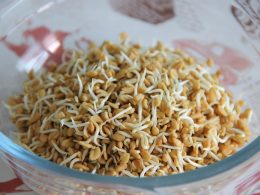Table of Contents
It’s no secret that chronic pain is a difficult condition to live with. Unlike injuries that go away with time, chronic pain has the potential to get worse, overwhelming patients with growing levels of pain that make everyday life harder.
However, there are many different emerging treatments for chronic pain that are giving us hope for the future. We now live in a society where patients suffering from chronic pain can access a variety of different treatments depending on their preference.
There are different benefits and detriments to certain types of treatment, though, so we’ve decided to create this list of 4 ways to determine what type of chronic pain relief is right for you.

Know What Your Insurance Covers
Becoming familiar with your insurance coverage is the first step that anyone dealing with chronic pain should do. This is because not all insurance policies work similarly, causing chronic pain patients to have to tailor their specific relief methods to their health insurance.
For example, if you are somebody who thinks they can benefit from physical therapy, it’s important to know whether or not your insurance covers that for chronic pain.
Some may prefer to pay out of pocket even if it doesn’t, but you should know your coverage in order to know your options.
Get the Opinion of a Specialist
If you’re someone who deals with chronic pain, it’s very likely that you initially saw your General Practitioner to find out what was happening. If you want to understand your condition better, the subsequent step to take is to go to a specialist who is familiar with what you’re dealing with.
For example, if you’re dealing with rheumatoid arthritis, consulting a rheumatologist is necessary to figure out how to properly deal with the condition.
Consider a New Diet
Something that many people forget while trying to deal with chronic pain is that it can often be caused by foods that you eat. Though adjusting your diet should not be used in place of proper medical treatment, you can definitely help your body by eating certain foods that help decrease inflammation.
For example, turmeric is an ingredient believed to significantly reduce inflammation. Find easy ways to incorporate turmeric into your diet each day either through a smoothie or a healing curry. Changing up your diet doesn’t need to be difficult.
Establish Daily Habits
When you are dealing with pain every day, it may sound tempting to skip your daily workout or stretching. However, this is an important part of keeping pain levels under control. Consider implementing a slow yoga flow into your morning routine or try some gentle stretches before bed. Setting aside time each day to relax and reduce stress can be beneficial as well. This will help your muscles relax and can even get your mind off the pain. Simple daily routines can create ripple effects and alleviate some of your pain throughout your day.
Find a Rehab Facility
For many people, finding a space specifically to deal with chronic pain can often be difficult due to the lack of specialist organizations in the area. However, making the trip to an outside community for the right neurosurgical and rehab facility can be a great solution. Your chronic pain might be caused by a bigger underlying health issue, so getting that addressed as soon as possible by the right practitioner will prevent unnecessary pain in the future.
You don’t have to be constantly suffering from chronic pain. There are plenty of options for treatment and resources for information. Do your research, talk to your doctor, and determine what methods will be best for you.















